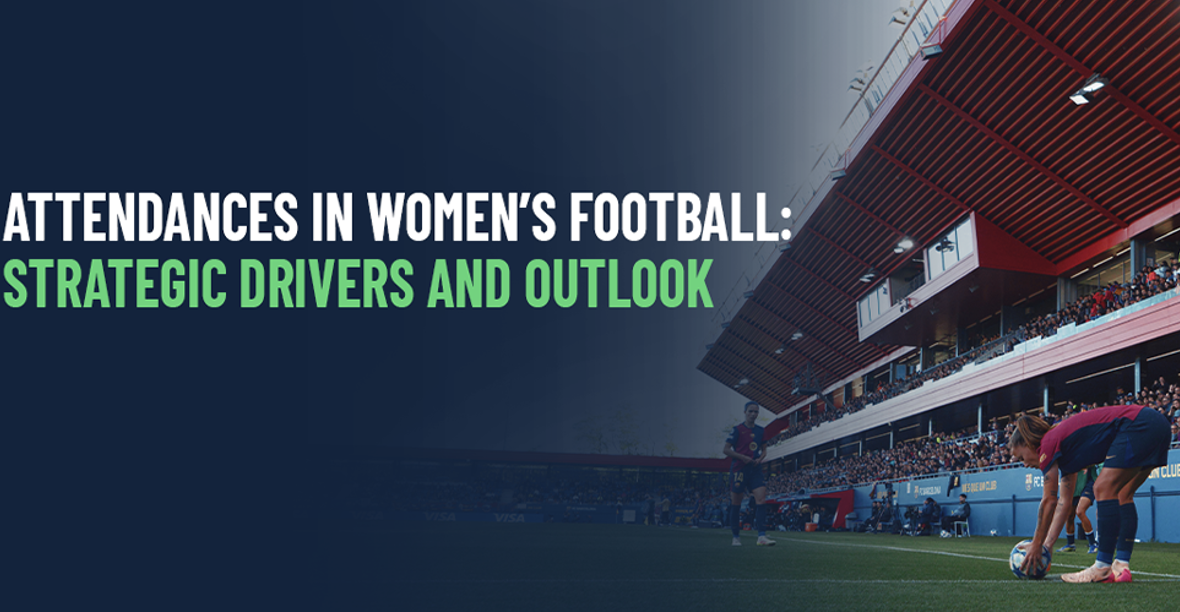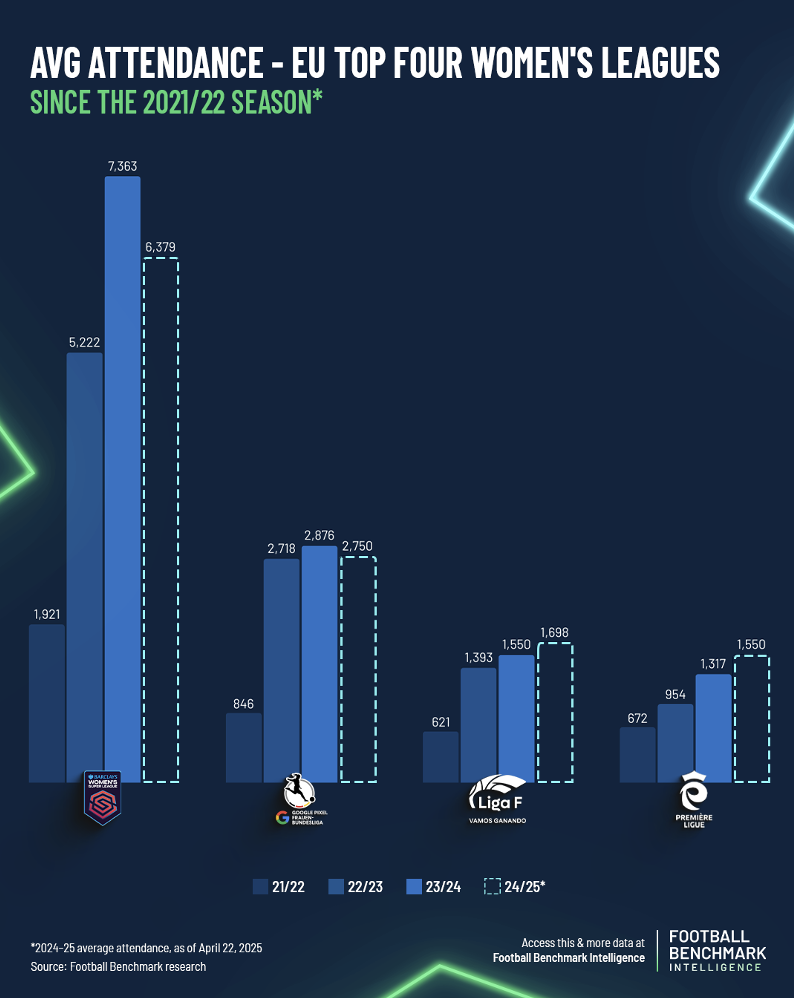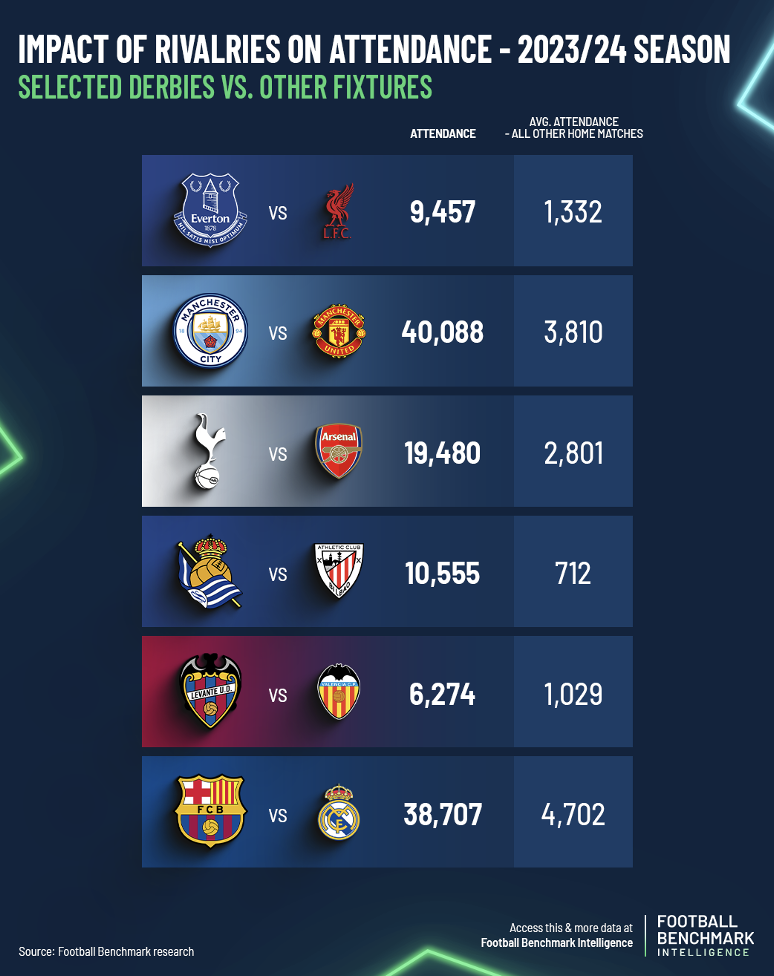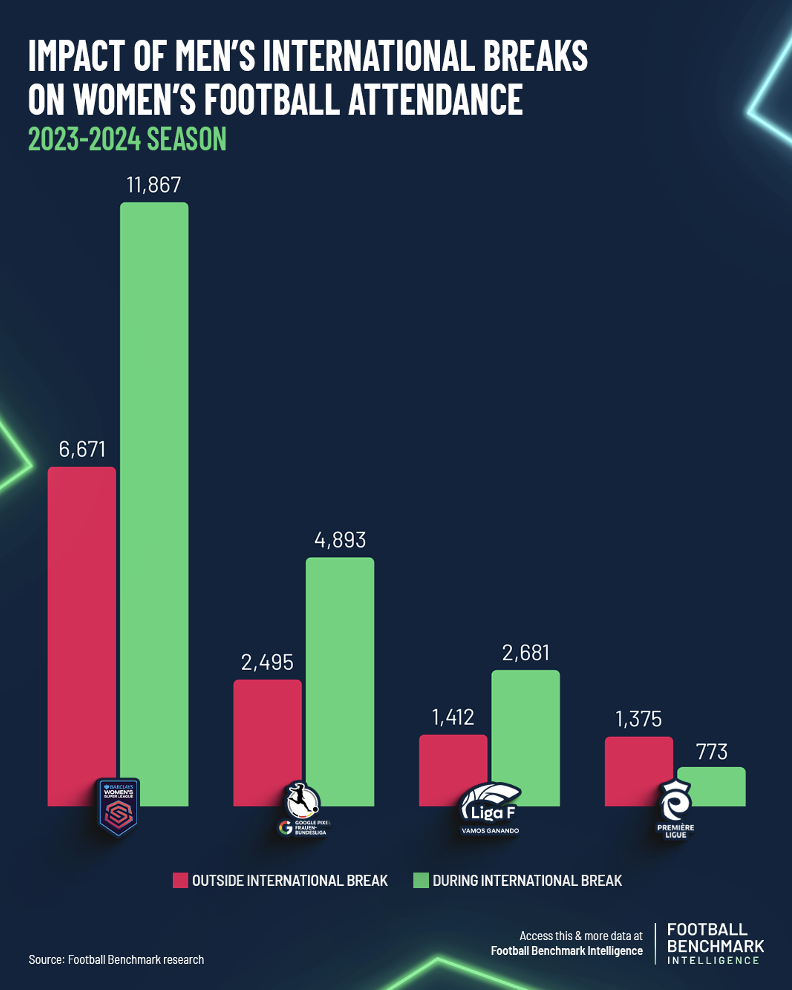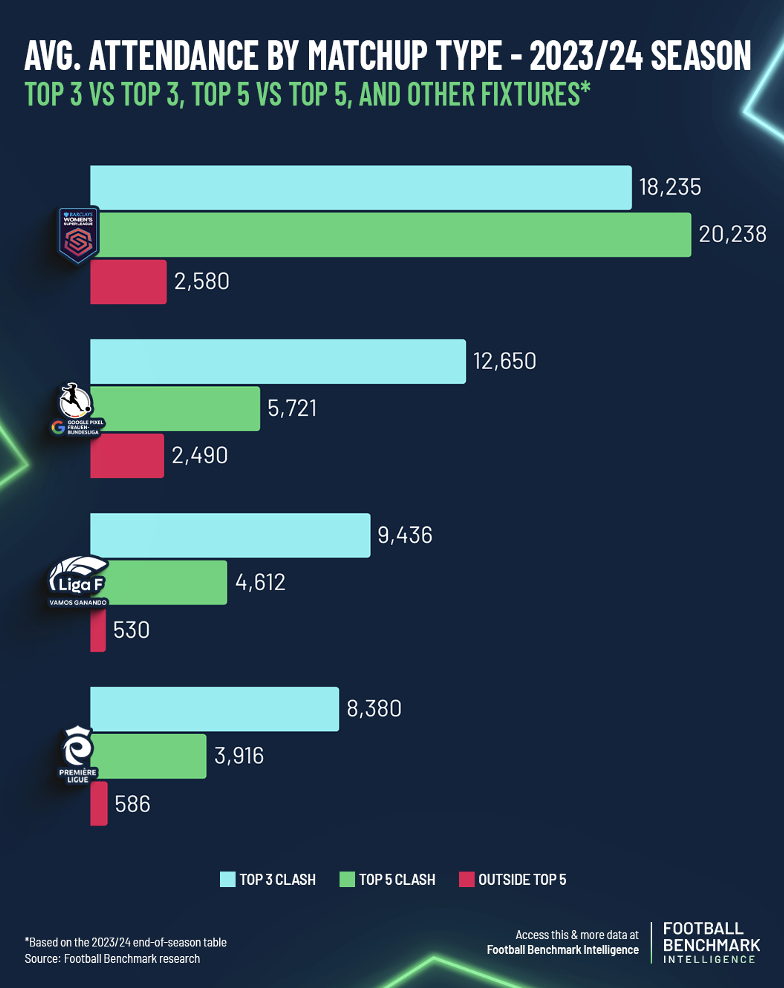May 2 – Attendance at European women’s football has been rising steadily but is the women’s game reaching another glass ceiling?
A report by the Football Benchmark team that examines the growth and key drivers of attendance at women’s football suggests that while stadium attendances are rising steadily, the speed of that growth is challenged by “infrastructure constraints, intensified competition for fan attention, and misaligned stakeholder priorities”.
The report says that maximising match day revenue opportunities in Europe is key to the overall sustainability of the professional women’s game “where significant media revenues are yet to be unlocked”.
The report focuses on UEFA’s top four women’s football leagues – England’s Women’s Super League (WSL), Germany’s Frauen-Bundesliga, Spain’s Liga F, and France’s Premiere Ligue.
At the centre of the challenges facing women’s clubs is the stadia they play in which the report says “restricts fans’ ability to discover and engage with the product”.
What has driven the visibility of the women’s game has been major international competitions. The women’s Euros this year in Switzerland could prove to be the springboard for new growth opportunity in the club game.
“In the season following the UEFA Women’s Euro 2022 final, 2022/23, the leagues of both finalists — England and Germany — recorded the largest absolute growth in average attendance, with increases of +3,301 and +1,872, respectively. The WSL’s continued efforts, combined with England’s runner-up finish at the FIFA Women’s World Cup 2023, helped push the league’s average attendance above 7,300 in 2023/24,” finds the report.
The biggest club names with established fan bases, derby rivalries, higher quality stadia, and elite players are the key drivers of attendances.
“In contrast, lower-tier matchups struggle to draw meaningful attendances,” says the report that highlights Spain’s Liga F to make the point.
“Attendance at top three clashes is on average 18 times higher than for lower-half fixtures, highlighting the league’s strong reliance on elite clubs. Similarly, in the WSL, encounters between top five sides — particularly those based in London, Manchester, and Liverpool — regularly attract crowds up to eight times greater than matches involving teams outside the top five…”
“A challenge for the German Frauen-Bundesliga and France’s Premiere Ligue is the absence of several historic men’s clubs from the women’s top tier. In Germany Borussia Dortmund, Hamburg, Schalke, and Stuttgart remain outside the top flight. in France, clubs such as Marseille and Lens are similarly absent.”
The report says the 2025/26 season will bring “transformative changes” to the European women’s club football landscape, with the launch of a revamped UEFA Women’s Champions League and the inaugural UEFA Women’s Europa Cup.
The argument is that with higher level competition and more exposure the women’s clubs will evolve from ‘episodic spikes’ in exposure (often in the international match window of the men’s games), to a more sustained engagement.
However, the report concludes that: “While these changes may intensify competition at the top of the table, maintaining relevance across the full league standings will remain a challenge in the short term without further structural reforms. The task ahead is not only to grow the game, but to do so sustainably — ensuring that women’s football evolves from moment-driven visibility to lasting relevance across the calendar and throughout the league.”
To see the full report, click here. https://footballbenchmark.com/w/attendances-in-women-s-football-strategic-drivers-and-outlook
Contact the writer of this story at moc.l1751615446labto1751615446ofdlr1751615446owedi1751615446sni@n1751615446osloh1751615446cin.l1751615446uap1751615446

